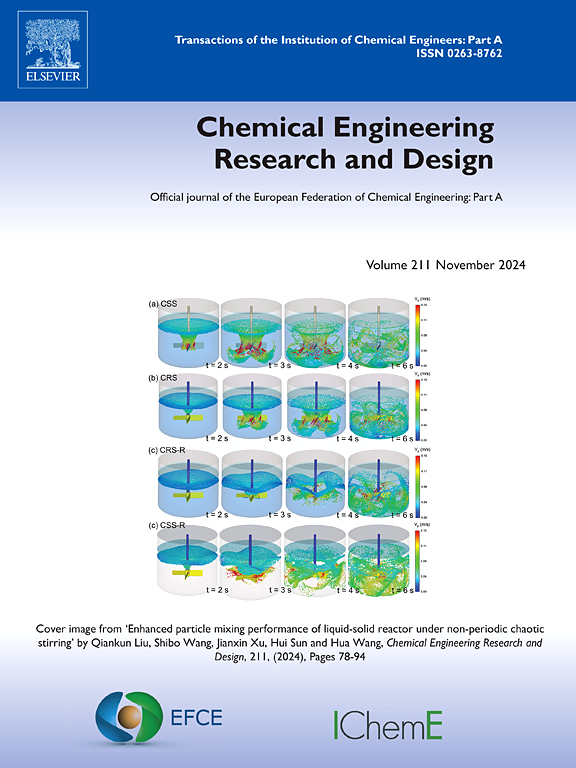生物质炭的加压二氧化碳气化实验和动力学研究
IF 3.7
3区 工程技术
Q2 ENGINEERING, CHEMICAL
引用次数: 0
摘要
生物质加压二氧化碳气化是利用生物质和减少二氧化碳排放的有效方法。在加压热重分析仪上,在温度为 750 至 950 ℃、压力为 1 MPa 的条件下,研究了二氧化碳分压对生物质炭气化动力学的影响。研究结果表明,玉米秸秆炭(CSC)、香椿锯末炭(TSC)和稻壳炭(RHC)的气化率随着二氧化碳分压的升高而增加。反应顺序随二氧化碳分压、气化温度和生物质类型而变化。相对于低二氧化碳分压范围(0.025-0.1 兆帕),在高二氧化碳分压范围(0.25-1.0 兆帕)内,与生物质炭相关的反应阶次显示出更高的值。采用 nth 阶模型阐明了生物质炭的气化行为。结果表明,改进的随机孔模型成功地应用于 CSC 和 TSC 的气化模拟。谷物模型能有效预测 RHC 的气化行为。在低二氧化碳分压和高二氧化碳分压下,Langmuir-Hinshelwood 模型都能准确预测三种生物质炭的气化率。本研究介绍了二氧化碳分压对生物质炭气化的影响以及在加压条件下预测生物质炭气化的方法。本文章由计算机程序翻译,如有差异,请以英文原文为准。
Experimental and kinetic study of pressurized CO2 gasification of biomass chars
Pressurized CO2 gasification of biomass represents an effective approach for the utilization of biomass and the reduction of CO2 emissions. The impact of CO2 partial pressure on the gasification kinetics of biomass chars was examined on a pressurized thermogravimetric analyzer at temperatures between 750 and 950 °C and elevated pressures (up to 1 MPa). The findings demonstrated that the gasification rates of corn stalk char (CSC), toonasinesis sawdust char (TSC), and rice husk char (RHC) exhibited an increase with rising CO2 partial pressure. The reaction order exhibited variability with respect to CO2 partial pressure, gasification temperature, and biomass type. The reaction order associated with biomass char exhibited a higher value at the elevated CO2 partial pressure range (0.25–1.0 MPa) relative to the low CO2 partial pressure range (0.025–0.1 MPa). The nth-order model was employed to elucidate the gasification behaviors of biomass chars. The results indicated that the modified random pore model was successfully applied to model the gasification of CSC and TSC. The grain model was effective in predicting the gasification behavior of RHC. The gasification rates of the three biomass chars were accurately predicted by the Langmuir-Hinshelwood model at both low and high CO2 partial pressures. This study presents information on the effect of CO2 partial pressure on biomass char gasification and methods for predicting biomass char gasification under pressurized conditions.
求助全文
通过发布文献求助,成功后即可免费获取论文全文。
去求助
来源期刊

Chemical Engineering Research & Design
工程技术-工程:化工
CiteScore
6.10
自引率
7.70%
发文量
623
审稿时长
42 days
期刊介绍:
ChERD aims to be the principal international journal for publication of high quality, original papers in chemical engineering.
Papers showing how research results can be used in chemical engineering design, and accounts of experimental or theoretical research work bringing new perspectives to established principles, highlighting unsolved problems or indicating directions for future research, are particularly welcome. Contributions that deal with new developments in plant or processes and that can be given quantitative expression are encouraged. The journal is especially interested in papers that extend the boundaries of traditional chemical engineering.
 求助内容:
求助内容: 应助结果提醒方式:
应助结果提醒方式:


